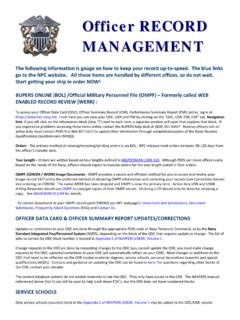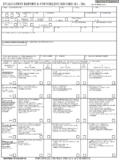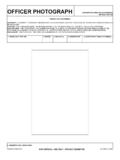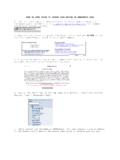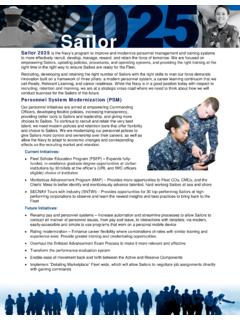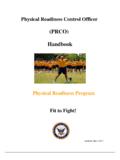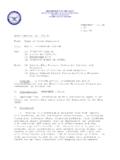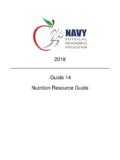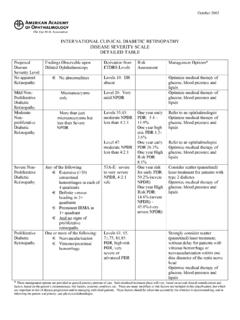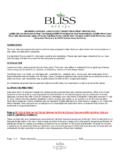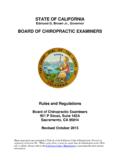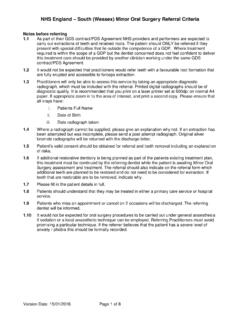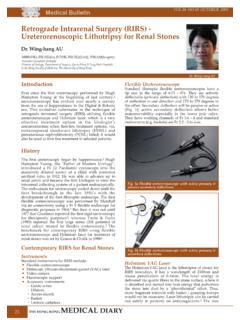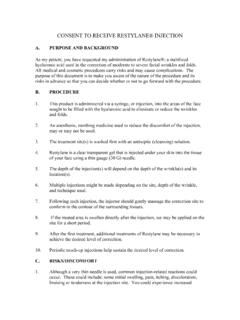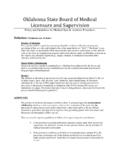Transcription of BUPERSINST 1000.22B N13 - United States Navy
1 BUPERSINST N13 27 DEC 2004 BUPERS INSTRUCTION From: Chief of Naval Personnel To: All Ships and Stations (less Marine Corps field addressees not having navy personnel attached) Subj: MANAGEMENT AND DISPOSITION OF navy PERSONNEL WITH PSEUDOFOLLICULITIS BARBAE (PFB) Ref: (a) navy Uniform Regulations, 1990 (b) OPNAVINST Encl: (1) Pseudofolliculitis Barbae (PFB) treatment Protocol (2) NAVPERS 1000 /1 (Rev. 12-02) Pseudofolliculitis Barbae (PFB) Shaving/Waiver/Evaluation/Disposition 1.
2 Purpose. To provide standardization in the management and disposition of servicemembers with Pseudofolliculitis Barbae (PFB). 2. Cancellation. BUPERSINST (R 3. Background. Grooming standards to promote uniformity in the military services have included the requirement to be clean shaven. Reference (a) permits the wearing of mustaches and allows for facial hair for certain medical conditions such as uncontrollable PFB (shaving bumps), severe facial scarring, etc. Reference (b) describes the associated problems of facial hair which may constitute a safety or health hazard for some personnel.)
3 4. Discussion. PFB is not a medical problem unless an individual is required to shave daily. This condition affects mainly the neck area but can affect any area of shaved skin. It occurs predominantly in Black or African American individuals, but members of other races with strongly curved hair may also develop this condition. PFB is a foreign body type of skin reaction. As the sharp lip of closely shaved hair grows out, it curves sharply, forms a loop and penetrates the skin adjacent to the hair follicle. Shaving causes or aggravates the disorder, BUPERSINST 27 DEC 2004 as only short stiff hairs reenter the skin.
4 No conventional system or schedule of shaving can cure this disorder. However, in most cases it can be controlled. 5. Policy. Medical department personnel must take necessary steps to educate both patients and their supervisors regarding the nature and treatment of PFB. Supervisors of individuals who are diagnosed with PFB must actively monitor and ensure treatment regimen is followed for those individuals as outlined in this instruction. It is the intent of this policy that a one-time thorough evaluation of each affected member's condition be sufficient.
5 Members will not be required to be reevaluated at any time or recommended for separation, subsequent to final determination, including transfer. 6. treatment . Individuals who state they cannot shave because of facial irritation will be referred to a medical officer for evaluation, diagnosis, and treatment . Enclosure (1) contains the treatment protocol that will be followed by all individuals with a diagnosis of PFB. After a PFB diagnosis has been made, the physician or Senior Medical Department Representative (SMDR) will instruct the patient and designated supervisor on the management and treatment protocol for PFB.
6 Enclosure (2) marked "For Official Use Only" will be utilized to document the servicemember's initial condition, progression of treatment , and final recommendation. The original will be placed in the member's health record and a copy will be placed in the member's service record/file. Individuals who have completed and failed the PFB treatment protocol will be recommended for a permanent "no shave" status. Enclosure (2) must be completed and presented to the commanding officer (CO) for action. 7. Action a. Individuals in a temporary or permanent "no shave" status must (1) maintain facial hair not to exceed 1/4 inch in length.
7 The beard will not become unkempt in appearance and will not be manicured to any style. (2) comply with all treatment protocols. b. Commands will place emphasis on education, monitoring, and assistance when members are first treated. If CO's determine that a permanent "no shaving" status is detrimental to good order and discipline or affects the members ability to perform military duties, they may process for Administrative Separation under MILPERSMAN article 1910-120 for Convenience of the Government - Physical or Mental Conditions as evidenced by Pseudofolliculitis Barbae (PFB).
8 The administrative separation package will contain the following information: 2 BUPERSINST 27 DEC 2004 (1) A certified copy of NAVPERS 1000 /1 (Rev. 12-02), Pseudofolliculitis Barbae (PFB) Shaving Waiver/Evaluation/Disposition Form (enclosure 2). (2) CO's comments relative to their recommendation. Documentation of command impact of inability to perform military duties must be provided. (3) A statement from the servicemember if so desired. If member declines to submit a statement, it must be so stated. (4) A "close-up" photograph of good quality which clearly depicts the member's PFB lesions.
9 C. Medical officer and member's command will document the (Rfinal determination in the health and service records/files of the member. A copy of enclosure (2) will be filed in the medical record. 8. Form. NAVPERS 1000 /1 (Rev. 12-02), Pseudofolliculitis Barbae (PFB) Shaving Wavier/Evaluation/Disposition is available on line at J. W. TOWNES, III Rear Admiral, navy Deputy Chief of Naval Personnel Distribution: SNDL Parts 1 and 2 3 BUPERSINST 27 DEC 2004 PSEUDOFOLLICULITIS BARBAE (PFB) treatment PROTOCOL Enclosure (1) 1.)
10 PHASE I - Control of mild cases (less than 20-30 small papules or rare pustules). a. Totally avoid shaving for 3 to 4 weeks until all lesions have subsided, while applying Vioform-HC cream (NSN 6505-00-074-9912) to involved skin each morning. b. To soften whiskers, begin a nightly application of Retin-A Cream - (NSN 6505-01-044-9389, .05%) (NSN 6505-01-044-9388, .1%) to beard skin while beard is growing out. Use as tolerated. c. Circular brushing of beard area with soft brush (polyester skin cleaning pad) or medium firm toothbrush, 4 times a day for 3 to 5 minutes.
